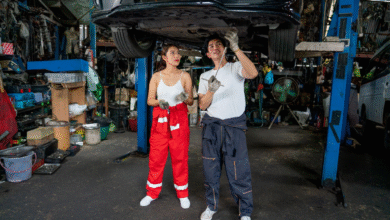Installing a rubber grommet in a plastic gas tank is a process that requires some care and attention to prevent leaks and ensure a secure fit. Rubber grommets are often used to create a sealed opening in the gas tank for items like fuel lines or electrical wires. Here’s a step-by-step guide on how to install a rubber grommet in a plastic gas tank:
Materials You’ll Need:
- Rubber grommet (make sure it’s compatible with fuel applications)
- Fuel-safe lubricant (optional)
- Utility knife or sharp scissors
- Electrical tape or heat shrink tubing (for electrical wire grommets)
- Appropriate tools for accessing the gas tank (e.g., socket wrenches, screwdrivers)
- Safety glasses and gloves
Step-by-Step Guide:
1. Prepare the Gas Tank:
- Ensure the gas tank is empty and free from any fuel vapors or fumes. Safety is a top priority when working with fuel systems.
2. Choose the Right Grommet:
- Select a rubber grommet that is suitable for use with fuel and the specific size needed for your application. Make sure it has an inner diameter that matches the size of the opening you need in the gas tank.
3. Lubricate the Grommet (Optional):
- If the grommet is tight or you want to make installation easier, you can lubricate it with a fuel-safe lubricant. This can help it slide into place more smoothly.
4. Mark the Location:
- Use a marker or pencil to mark the exact location where you want to install the grommet on the gas tank. This should be based on the needs of your specific application, such as for a fuel line or electrical wire.
5. Create a Hole in the Gas Tank:
- To create the hole for the grommet, you can use a drill with an appropriate-sized drill bit. Ensure the hole size matches the outer diameter of the grommet.
6. Trim the Grommet (if needed):
- If the grommet has excess material, trim it with a utility knife or sharp scissors to ensure it fits properly into the hole.
7. Insert the Grommet:
- Carefully insert the grommet into the hole you created in the gas tank. Make sure it fits snugly and creates a tight seal.
8. Secure the Grommet:
- Depending on the application, you may need to secure the grommet from the inside of the gas tank. This can be done by using a locking washer or nut, depending on the design of the grommet and your specific needs.
9. Test for Leaks (if applicable):
- If you’ve installed the grommet for a fuel line, it’s essential to test for leaks. Fill the gas tank to a low level and check for any fuel seeping around the grommet. If you detect a leak, recheck the installation and make sure the grommet is seated properly.
10. Seal Electrical Wire Grommets (if applicable):
- If the grommet is for an electrical wire, you can use electrical tape or heat shrink tubing to seal around the wire where it passes through the grommet. This helps prevent moisture from entering the gas tank.
11. Reassemble and Test:
- Reassemble any components you removed to access the gas tank and test the system or equipment to ensure it functions correctly without any leaks.
Safety and attention to detail are crucial when working with fuel systems. If you are uncomfortable or unsure about any part of this process, it’s best to seek assistance from a professional mechanic or technician to ensure a safe and leak-free installation.
Also Read:
https://infusionpost.com/how-to-inject-meat-without-an-injector/
https://infusionpost.com/how-to-inject-mosquito-spray-in-sprinkler-system/
https://infusionpost.com/how-to-install-deb-in-fedora/



